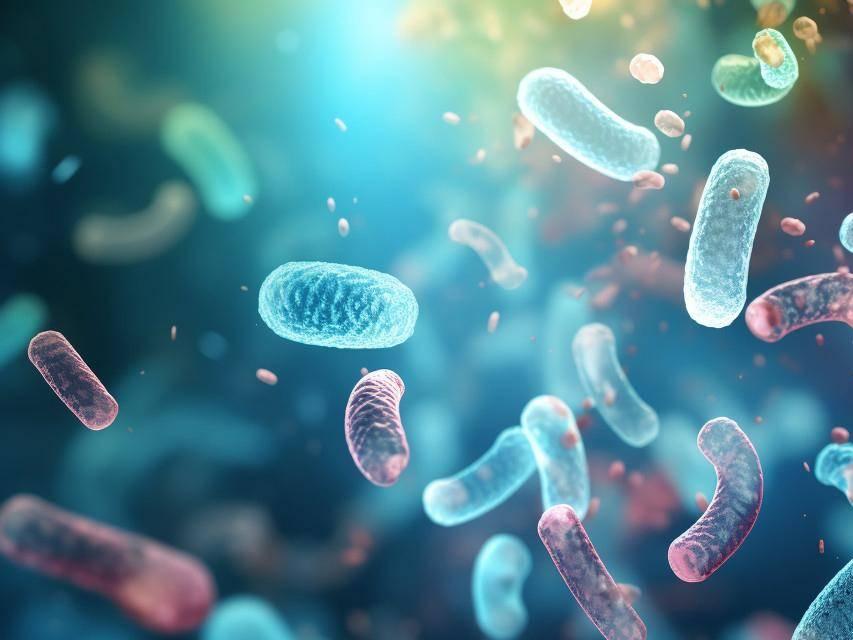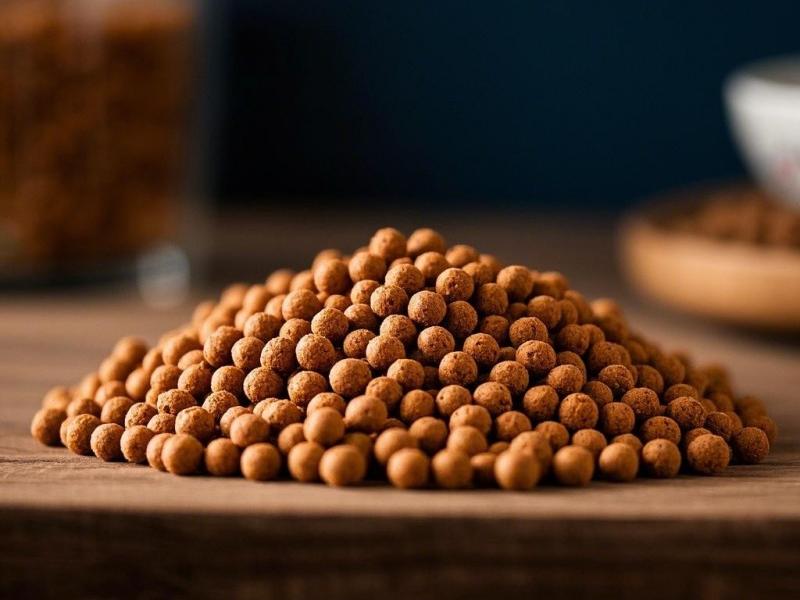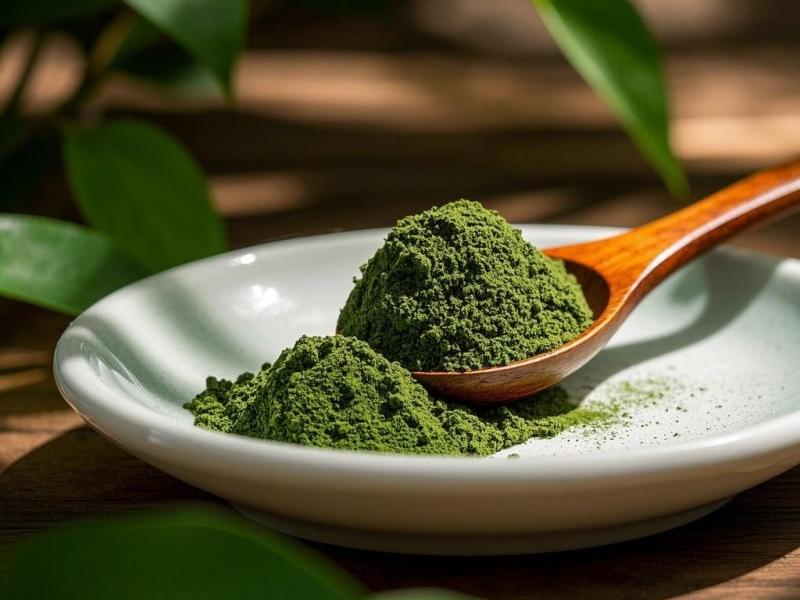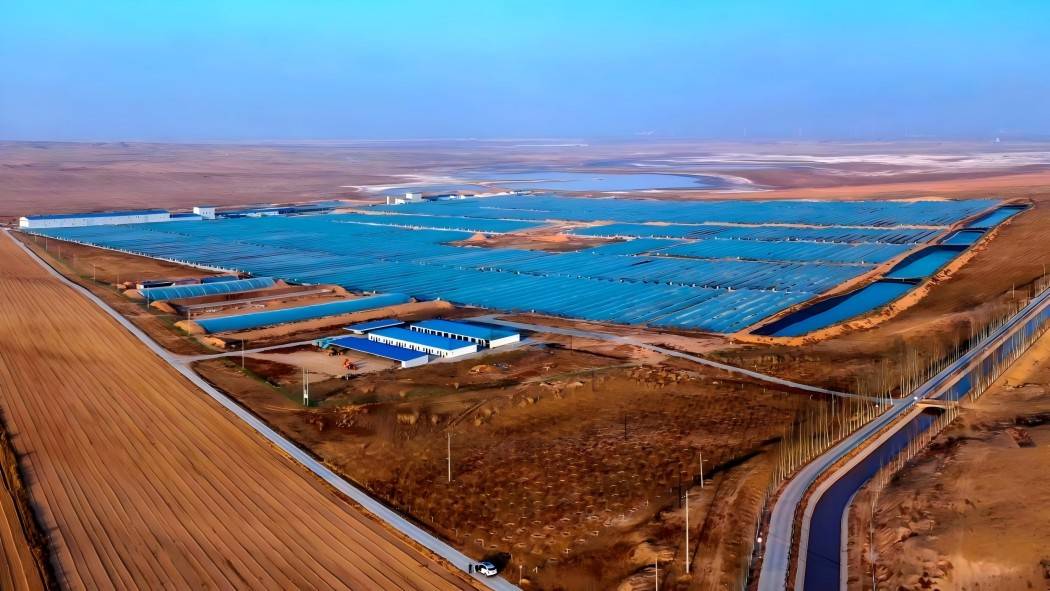Spirulina Is a Rich Source of Protein
Spirulina is one of the oldest medicinal plants on the planet. Research this year has shown that spirulina is rich in amino acids, vitamins, minerals and other nutrients the body needs, and has attracted much attention due to its wide range of effective medicinal properties. This article provides a review of the composition and pharmacological effects of spirulina over the years.
1. Spirulina nutritional composition
1.1 Protein
Spirulina contains 58.5% to 83.4% protein, with an appropriate amino acid composition. The content of the eight essential amino acids is close to or exceeds the composition ratio standards recommended by the Food and Agriculture Organization of the United Nations (FAO). Spirulina has a protein digestibility rate of 75.0% and a bioavailability rate of 68.0%. Therefore, it is considered to be the food with the highest protein content and best quality known to mankind [1, 2]. The essential amino acids it contains are very similar to the RDA values (human requirements) recommended by the United Nations Food and Agriculture Organization and the World Health Organization, which are 4.1% to 4.5% for isoleucine, 5.8% to 6.8% for leucine, lysine 4.4% to 4.6%, phenylalanine 2.9% to 4.4%, methionine 1.8% to 2.4%, threonine 2.7% to 4.1%, tryptophan 1.1% to 1.6%, and valine 4.8% to 6.5%.
1.2 Fat
Spirulina is a low-fat food with a fat content of 6% to 9%. Its fatty acids are mostly unsaturated fatty acids, with a content of 4.9% to 5.7% (Table 1). In particular, the content of essential fatty acids is high, and the content of γ-2 linolenic acid, which has a variety of health functions, is as high as 8.75 to 11.97 g/kg [3]. Moreover, the fat does not contain cholesterol.
1.3 Vitamins
Due to the active cell division, rapid growth and vigorous metabolism of spirulina, it is also rich in various vitamins (B1, B2, B12, E) that are directly related to growth and development. In particular, it is high in beta-carotene, vitamin E and B12. The vitamin content per 100g is as high as 150~ 170mg, 5~20 mg, and 0.05~0.2mg, respectively [4]. Beta-carotene is the highest of all foods, 10 times higher than that of carrots, and the vitamin B12 content is 3.5 times that of animal livers. It is also the highest among all living organisms.
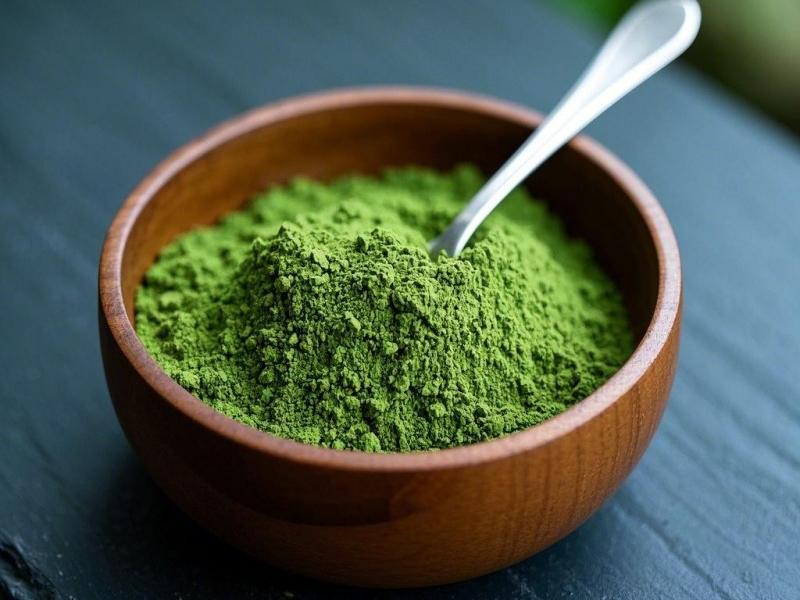
1.4 Minerals
Spirulina is rich in minerals and trace elements (such as calcium, iron, zinc and selenium). It is especially rich in selenium compared to ordinary terrestrial foods (Table 2). These trace elements and minerals are combined with organic matter and are easily absorbed and utilized by the human body. They can effectively regulate the body's balance and enzyme activity.
1.5 Bioactive substances
1.5.1 Spirulina polysaccharides
A water-soluble polysaccharide, spirulina polysaccharide, can be isolated from spirulina. It has strong biological activity and is the main form of carbohydrate in spirulina. It contains 2–4 g per 100 g and is composed of D-mannose, D-glucose, D-galactose and glucuronic acid [5]. 170 mg of phycocyanin is contained in 1 g of spirulina [6], which is more than 10 times the amount contained in ordinary vegetables.
1.5.2 Active protein
Studies have shown that phycocyanin extracted from spirulina is not only a good natural pigment, but also enhances the immunity of organisms and has obvious effects in inhibiting the growth of cancer cells.
1.5.3 Unsaturated fatty acids
The fatty acids in spirulina powders are mainly unsaturated fatty acids, linoleic acid and γ-2 linolenic acid. Linoleic acid is an essential fatty acid for the human body. It can be converted into γ-2 linolenic acid through the EFA pathway, and ultimately into prostaglandins, which participate in regulating various basic physiological processes of the human body, including regulating blood pressure, cholesterol synthesis, etc., and can prevent diabetes, cancer, obesity, skin aging, etc.
1.5.4 β2 carotene
Spirulina contains 10 times the beta-carotene of carrots. Beta-carotene is a good natural food coloring, and also has high nutritional and medicinal value. Beta-carotene is a precursor to vitamin A, and it also has anti-aging and cancer prevention properties.
2. Physiological activity research
2.1 Immune regulation
Spirulina has special biological activity, effectively eliminating the damage to tissue cells caused by free radicals in the body, improving immune function, preventing disease and promoting human health. Li Fengwen et al. [7] used mice as experimental subjects. Spirulina was administered to mice at a dose of 333.4 mg/kg·bw by gavage for 30 to 35 days. The results showed that the dose group was stimulated the proliferation and transformation of mouse spleen lymphocytes; promoted the delayed-type hypersensitivity reaction in mice; increased the number of antibody-producing cells and the level of serum hemolysin in mice; enhanced the phagocytic and carbon clearance abilities of mouse mononuclear-peritoneal macrophages; but had no significant effect on the functional activity of mouse NK cells.
This shows that spirulina has the effect of enhancing the immune function of mice. Chen Weiping [8], et al. Spirulina at a dose of 700 mg/kg/day can significantly enhance the immunity of mice whose cells have been suppressed by cyclophosphamide and increase the effect of ANAE-positive lymphocytes in peripheral blood. Tang Mei, et al. [9] experiments have shown that phycocyanin can promote the role of phytohaemagglutinin (PHA) in stimulating the transformation of lymphocytes, restores the ability of T cells to form E rosettes after cyclophosphamide damage, and in particular has a good restorative effect on the formation of active E rosettes; and can significantly increase the number of antibody-forming cells and the ability to produce antibodies in spleen cells from normal mice and hydrocortisone-treated mice with low immune function.
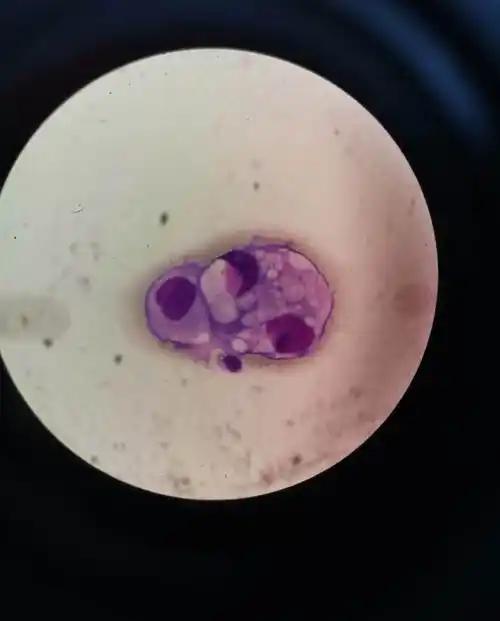
Chen Wenqing [10] showed that spirulina polysaccharides can promote lymphocyte proliferation in mice and exert an immunomodulatory effect by inducing IFN-γ. Al-Batshan HA et al. [11] found that spirulina can enhance the function of chicken mononuclear macrophages, thereby enhancing the disease resistance of chickens. Hirahashi et al. [12] used the hot water extraction method to extract spirulina polysaccharides and found that they can enhance the killing ability of NK cells.
2.2 Antitumor effect
Spirulina has anti-cancer and anti-tumor effects, improving the quality of life and prolonging the survival time of cancer patients. Yu Hong et al. [13] used the MTT method (tetrazolium salt colorimetry) to study the inhibitory effect of spirulina polysaccharide (PSP) on the growth of Hela cells and HepG2 cells. The results showed that with the increase of the concentration of PSP and the culture time, the survival rate of tumor cells gradually decreased, and the inhibition rate gradually increased. The inhibition was most significant when PSP was used at 40 mg/L for 72 h. Annexin V/PI double staining flow cytometry was used to detect early apoptosis of Hela cells. Normal Hela cells without treatment with blunt-top spirulina polysaccharides had very few apoptotic cells. The percentage of apoptotic cells in PSP-treated cells was significantly higher than that in the normal control group. The effect increased with the increase of dose and the prolongation of time, and there was a quantitative and temporal relationship.
Studies have shown that the anti-tumor mechanism of spirulina platensis polysaccharide, in addition to inducing apoptosis in tumor cells, also involves other mechanisms such as cytotoxicity. Research has shown that the anti-tumor effect of spirulina platensis polysaccharide is the result of the combined action of multiple mechanisms. Jia Xiaodong et al. [14] found that the treatment of tumor cells with spirulina polysaccharides increased the density of the cytoplasm, shrunk the nucleus, concentrated the chromatin and caused it to aggregate into lumps. Apoptotic bodies similar to round bodies could also be found. Spirulina polysaccharides can prevent BEL7404 cells from entering the S phase from the G1 phase, thereby inhibiting their proliferation. Spirulina has the effect of assisting chemotherapy. Peng Minhua et al. [15] studied the efficacy of spirulina during the interval between chemotherapy sessions for malignant hematological diseases. The study showed that spirulina can assist chemotherapy or radiotherapy, reduce the toxic reactions of chemotherapy drugs, improve the patient's physical condition, improve the quality of life, protect the liver, regulate gastrointestinal function, and has no adverse reactions on the human body. To a certain extent, it improves the patient's tolerance to chemotherapy drugs.
Zhang Chengwu et al. [16] used a semi-solid agar culture method and a Mrr detection method to determine the effect of spirulina phycocyanin on the growth of human leukemia cell lines HL-60, K-562, and U-937 in vitro. The study showed that spirulina phycocyanin had a different degree of inhibitory effect on these three types of leukemia cells, and there was a concentration-dose effect, with a strong inhibitory effect at high concentrations.
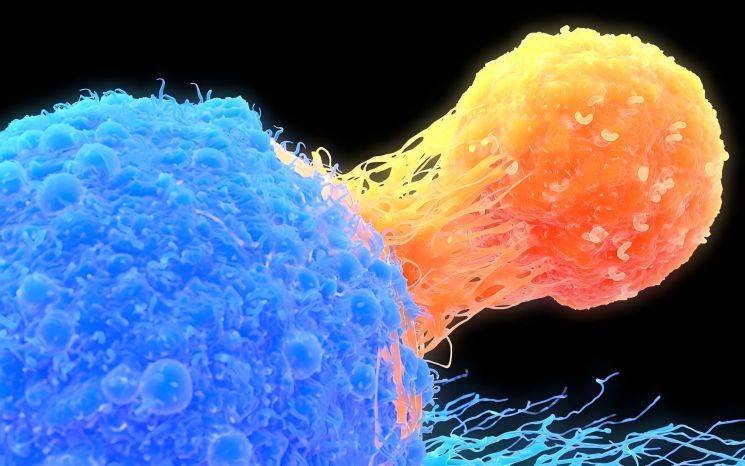
2.3 Antiviral effect
Yu et al. [17] found that algal polysaccharides can interfere with virus adsorption to host cells and effectively inhibit virus replication without affecting virus release. Algal polysaccharides can also significantly inhibit the expression of HSV-1 glycoprotein gG mRNA. This indicates that the antiviral target of algal polysaccharides is to block virus adsorption and inhibit the replication of viruses in infected cells and the transcription of HSV glycoprotein genes. Algal polysaccharides have a clear dose-response relationship. Since viruses often use the host cell's hydroxylation process to produce the outer shell glycoprotein part, this sugar is almost indistinguishable from the glycan part of the host glycoprotein, allowing the virus to appear in the host cell and avoid surveillance by the immune system. Therefore, interfering with the glycosylation of the virus may be the reason for the antiviral effect of polysaccharides.
2.4 Anti-oxidation and anti-aging effects
The oxidative metabolism of organisms produces anionic free radicals and hydroxyl radicals (·OH) and reactive oxygen species. Free radicals and reactive oxygen species are easily caused by lipid peroxidation and have a great toxic effect on cells. The body has an enzymatic defense system that mainly uses superoxide dismutase (SOD) and peroxidase, as well as a non-enzymatic reaction system that includes vitamins E, A, and C, coenzymes, and the reducing glutathione compound. Modern free radical medical research believes that the accumulation of reactive oxygen species and peroxides causes damage to cells and the body. Therefore, aging, inflammation, and immune system diseases in organisms are all related to free radical metabolic disorders. Improving the body's antioxidant capacity can fight diseases caused by lipid peroxidation triggered by reactive oxygen species and free radicals. Spirulina improves the activity of SOD in the body, enhances enzymatic defenses, and thus eliminates various free radicals, thereby improving the damage caused by active oxygen.
Li Ling et al. [18] used the Fenton reaction and photochemical riboflavin to produce the active free radicals ·OH and ·O-2, and studied the in vitro scavenging of ·OH and ·O-2 by spirulina and spirulina polysaccharides using spectrophotometry. The study showed that spirulina and spirulina polysaccharides can effectively remove ·OH and ·O-2 (formate) free radicals, and have a significant inhibitory effect on lipid peroxidation and ·OH oxidative damage to DNA. Hu Jinhua et al. [19] showed that spirulina has a clear hepatoprotective effect, and that oral spirulina supplementation increased serum SOD and xpGSH levels in experimental animals, indicating that spirulina can protect liver cells by preventing oxidative damage.
2.5 Anti-radiation effect
Wang Yanli et al. [20] showed that spirulina polysaccharide ingestion can increase the survival rate of irradiated mice, effectively increase the relative number of hematopoietic stem cells, significantly increase the number of nucleated cells in the mouse bone marrow and the number of CFU-GM colonies, and increase the number of CFU-MK, CFU-MIX and BFU-E colonies. In addition, the administration of spirulina polysaccharides to recipient mice by gavage can also increase the number of hematopoietic stem cells (CFU-S). This indicates that spirulina polysaccharides can promote the proliferation and differentiation of hematopoietic stem cells and various hematopoietic progenitor cells, improve the radiation tolerance of mice, and promote the recovery of the hematopoietic system after radiation damage. Therefore, spirulina polysaccharides not only have a preventive effect on radiation damage, but also can be used as a good drug to treat radiation-induced damage to the hematopoietic system. Zhang Chengwu et al. [21] found that giving mice 50 mg/kg of spirulina protein by injection every day 5 days before exposure to a lethal dose of 60Co γ-rays increased the survival rate by about 28% compared to the control group of mice. and found that spirulina protein can stimulate the formation of granulocyte-monocyte progenitor cells and hematopoietic stem cells in irradiated mice, increase the number of nucleated cells in the bone marrow, and increase the total number of peripheral blood cells in mice, but have no significant effect on the number of peripheral blood erythrocytes and hemoglobin levels.
2.6 Anti-mutagenic effect
Wang Youshun et al. [22] showed that spirulina polysaccharides have a significant inhibitory effect on the micronucleus rate of bone marrow cells induced in mice. This indicates that spirulina polysaccharides can antagonize chromosomal mutations in mice, and that the inhibitory rate increases with the concentration of spirulina polysaccharides.
2.7 Neuroprotective effect
Rimbau et al. [23] found that after administering spirulina to mice with nerve damage, the abnormal nerve function of the mice improved. Therefore, it is believed that it can be used as a repair agent for nerve damage caused by oxidative stress and can be applied to neurodegenerative diseases such as Parkinson's disease.
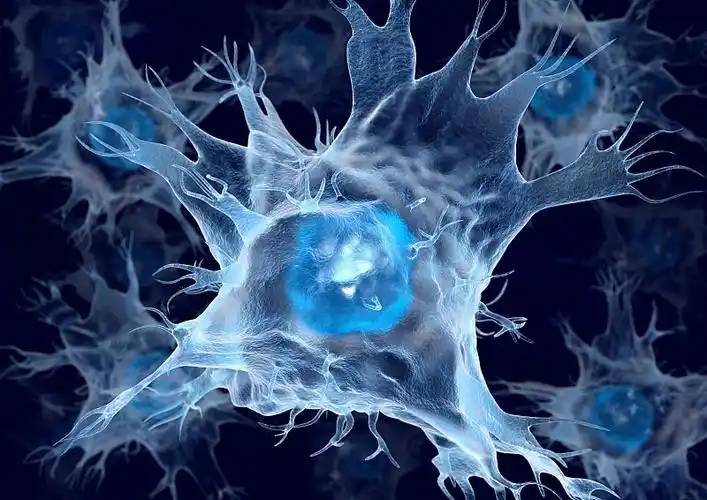
2.8 Lowering blood sugar and blood lipids
Spirulina contains a large amount of fatty acids, of which linoleic acid and linolenic acid account for 45%. These two are important components of the mitochondrial phospholipids that make up cell membranes, and can prevent total cholesterol (TC) and triglycerides (TG) from accumulating in the liver and blood vessels, damaging the normal physiological function of the cardiovascular system. Liu Zhongshen et al. [24] found that spirulina had a significant preventive effect on hyperlipidemia in mice caused by intraperitoneal injection of egg yolk emulsion, with spirulina administered by gavage at 1 g/kg. Compared with the positive control of Alaska fish oil, spirulina was superior to fish oil in reducing TG and slightly inferior to fish oil in reducing TC. Spirulina also had a good inhibitory effect on the increase of serum TC and TG induced by high-fat diet in rats [25].
Zhang Zhen [26] used spirulina capsules (trade name: Spirulina) to treat 157 patients with hyperlipidemia, and compared the results with 80 patients treated with polyene con. The results showed that the effective rate of lipid-lowering in the spirulina treatment group was 47.4%, with a total effective rate of 76.0%; the dofenconazole treatment group was 48.7% and 85.0% respectively (P > 0.05). Spirulina capsules have a significant effect on improving patients' subjective symptoms such as dizziness, fatigue, and insomnia. No adverse reactions were found during the entire treatment process, and there was no damage to liver or kidney function. The results of a study by Jia Shaoting et al. [27] showed that spirulina polysaccharides can significantly antagonize the increase in blood glucose caused by glucose in mice, indicating that algal polysaccharides may inhibit the absorption of glucose in the mouse intestine and significantly antagonize the blood glucose-raising effect of adrenaline. This may be related to the inhibition of algal polysaccharides on hepatic glycogenolysis and the promotion of glucose uptake and utilization by peripheral tissues.
Wang Jianxiu et al. [28] used spirulina to treat 76 patients with hyperlipidemia and proved that spirulina can effectively lower TC and TG, increase HDL-Ch, and lower TG more effectively than TC. There were no significant adverse reactions, indicating that spirulina is particularly suitable for the treatment of hyperlipidemia with elevated TG, and is a good lipid-regulating drug. Jiang Tao et al. [29] studied the effect of spirulina on blood glucose in normal mice. Compared with the control group, the spirulina dose group had a significant hypoglycemic effect on normal mice, but spirulina had no effect on the hyperglycemia caused by alloxan. This indicates that the mechanism of spirulina in lowering blood glucose may be related to promoting the secretion of insulin by β-islet cells.
Zuo Shaoyuan et al. [30] gavaged Kunming mice with spirulina polysaccharides at 100 mg/kg and 200 mg/kg for 10 consecutive days. The results showed that spirulina polysaccharide can significantly reduce the hyperglycemia caused by streptozotocin (STZ) in mice, but has no significant effect on the fasting blood glucose of mice. Spirulina polysaccharide can also significantly antagonize the increase in blood glucose caused by glucose in mice, indicating that PSP can inhibit the absorption of glucose in the mouse intestine.
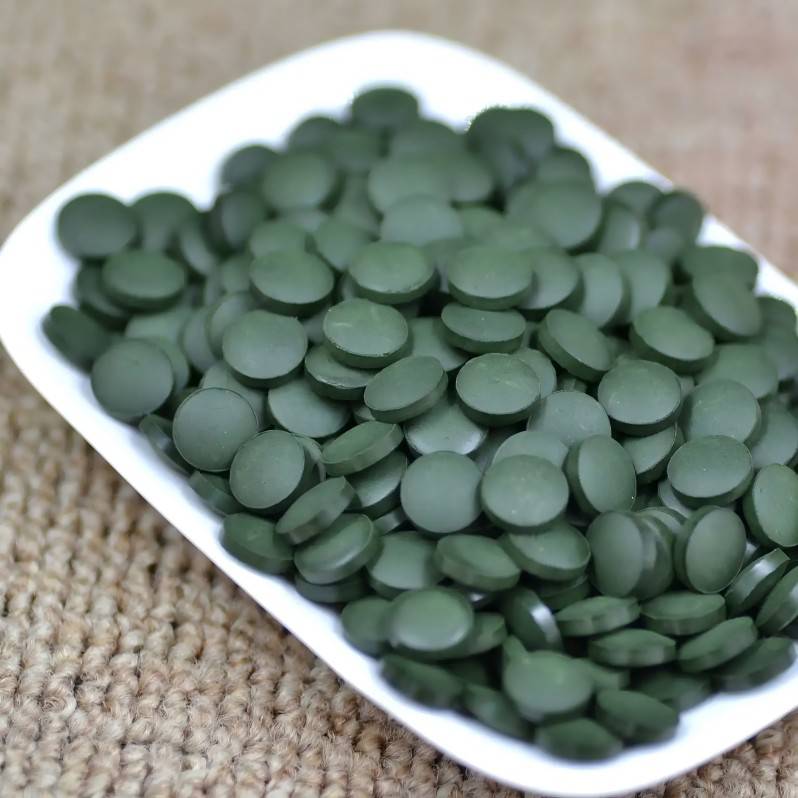
3. Prospects
Spirulina is rich in protein. After enzymatic hydrolysis, the inhibitory activity of the degradation products on ACE enzyme was studied; the biological activity of the secondary, the biological activity of the secondary, tertiary and quaternary structures and the structure-activity relationship; by modifying the glycosylation to improve its activity, the polysaccharide sulfates can inhibit the formation of syncytia and thus inhibit the activity of reverse transcriptase (RT), block the reproduction of HIV, and ultimately eliminate the pathological damage to the body. Polysaccharide sulfates are a new class of drugs for the treatment of HIV infection and the development of anti-AIDS drugs [31]. New drug delivery routes and doses are being sought to develop new spirulina drugs with high efficacy and low toxicity.
Spirulina is rich in various nutrients and bioactive substances and has a wide range of applications in the food, pharmaceutical, animal husbandry, cosmetics and environmental protection industries. Therefore, the research, development and utilization of spirulina has an attractive and broad future.
References
[1] Zuo Shaoyuan. The nutritional value of spirulina and its comprehensive utilization. Chemistry of Life [J], 1994, 14(6): 46-47.
[2] Ross E, Dominy W. The nutritional value of dehydrated, blue-green algae (Spirulina platensis) for poultry. Poult-Sci [J]. 1991;69:794-800.
[3] Gui Hua. The nutritional and health-care effects of spirulina. Agricultural Science Research [J]. 2005, 26(1): 89-92.
[4] Zeng Min. The nutritional and health-preserving effects of spirulina on the elderly. Journal of Hainan University (Natural Science Edition) [J], 2000, 18 (12): 397.
[5] Zheng Xueling. Progress in the research and development of spirulina in China. Science Herald [J], 1994, (7): 54.
[6] Yang Shicheng. Spirulina and its nutritional and health-care functions. China Food and Nutrition [J], 2003, (3): 16.
[7] Li Fengwen, Zhao Peng, Su Airong, Li Bin, et al. Experimental study on the regulation of immune function in mice by spirulina tablets. Chinese Journal of Tropical Medicine [J], 2008, 8(4): 539-540.
[8] Chen Weiping, Yan Meiting, Liu Shengbo, et al. Chemical composition analysis and pharmacodynamic study of spirulina. Traditional Chinese Medicine [J]. 2008, 23(8): 470-473.
[9] Tang Mei, Jin Ying, Guo Baojiang, et al. Effect of spirulina phycocyanin on immune function in mice. Journal of Jinan University [J], 1998, 19 (5): 93-97.
[10] Chen Wenqing, Lv Shijing, He De. The immunomodulatory effect of spirulina polysaccharide on lymphocyte proliferation and IFN-γ production in immunocompromised mice [J], Shizhen Traditional Chinese Medicine, 2008, 19 (4); 941-942.
[11] Al-Batshan HA, Al-Mufarrej SI, Al-Homaidan AA, Qureshi MA. Enhancement of chicken macrophage phagocytic function and nitrite production by dietary Spirulina platensis Immunopharmacol Immunotoxicol, 2001, 23 (2): 281-286.
[12] Hirahashi T, Matsumoto M, Hazeki K, et al. Activation of the human innate immune system by Spirulina: augmentation of interferon production and NK cytotoxicity by oral administration of hot water extract of Spirulina platensis, 2002, 2 (4) : 423~429.
[13] Yu Hong, Lv Rui, Zhang Xuecheng. Experimental study on the effect of spirulina polysaccharide on tumor cell growth and early apoptosis of Hela cells. Marine Science [J], 2008, 32(1): 38-40.
[15] Peng Minhua, Pu Liumei, Fei Xingchang. Clinical observation on the treatment of malignant hematological diseases with spirulina-assisted chemotherapy regimen. Chongqing Medical [J]. 2008, 37(9):978~979.
[14]Jia Xiaodong, Kuang Xiaocong, Pang Hui, et al. Effect of spirulina polysaccharide on the proliferation of liver cancer cells BEL7404, Guangxi Medical Journal [J], 2008, 30(8):1122~1124.
[16] Zhang Chengwu, Liu Yufeng, Wang Xixia, et al. Effect of spirulina protein on the growth of human leukemia cell lines HL-60, K-562 and U-937. Marine Science [J], 2000, 24(1): 45-48.
[17] Yu Hong, Zhang Xuecheng. Experimental study on the antitumor effect of spirulina polysaccharides [J]. High Technology Communications, 2003, (7): 83-86.
[18] Li Ling, Gao Yuntao, Dai Yun, et al. In vitro scavenging of active oxygen and antioxidant effects of spirulina and spirulina polysaccharides. Chemical and Biological Engineering [J]. 2007;24(3), 55-57.
[19] Hu Jinhua, Wu Like, Zhang Juan, et al. A preliminary study on the protective mechanism of spirulina against experimental acute liver injury. Chinese Journal of Microecology [J]. 200,(6), 20(3)216-218.
[20] Wang Yanli, Chen Wanhua, Xie Yingxian, et al. Pharmacological effects of spirulina polysaccharides. Biotechnology Bulletin [J]. 1999, 5: 26-29
[21] Zhang Chengwu, Zeng Zhaqi, Zhang Aizhen, et al. The protective effect of spirulina platensis phycocyanin on acute radiation sickness in mice, Journal of Nutrition [J], 1996, 18(3):327~331.
[22] Wang Youshun, Li Lugang. The protective effect of spirulina polysaccharide on mice given cyclophosphamide Bala/c, Marine Science [J], 1997, (6):36~38.
[23]Reddy MC, Subhashini J, Mehipal SV, et al. C-phycocyanin, a selective cyclooxygenase-2 inhibitor, induces apoptosis in lipopolysaecharide-stimulated RAW256.7 macrophages[J]. Biochem Biophys Res Commun, 2003, 304(2):385-392.
[24] Liu Zhongshen, Lan Yunsong, Liu Chuan, Zhou Qiuhong. Research on the preventive effect of spirulina on experimental hyperlipidemia in mice. Acta Academiae Medicinae Sinicae [J], 1996; (4): 43-44.
[25] Li Xianghong, Yuan Xiuling, Wu Kaiguo, Su Meibao. Effect of spirulina on blood lipid levels in rats fed a high-fat diet. Journal of Nutrition [J], 1996; 18:206-208.
[26] Zhang Z. Observation of the efficacy of “Shupurei” in the treatment of hyperlipidemia—with a dialectical analysis of 157 cases. Beijing Traditional Chinese Medicine [J], 1995; (1):24-25.
[27] Jia Shaoting, Yin Wenzheng, Extraction and purification of natural spirulina polysaccharide and experimental study on its hypoglycemic activity, Journal of Agricultural Products Processing, 2007, 88(1): 46-48.
[28] Wang Jianxiu, Zhang Rui, Wang Xiuping. Clinical observation of 76 cases of spirulina treatment of hyperlipidemia, Journal of Taishan Medical College [J], 1996; 17: 73-74.
[29] Jiang Tao, Tang Chunping, Wu Aifei, et al. Effects of spirulina on blood glucose, blood acid and platelet aggregation in experimental animals. Chinese Herbal Medicine [J], 1997, 28(8) 481-483.
[30] Zuo Shaoyuan, Qian Jin, Wan Shunkang, et al. Experimental study on the hypoglycemic and lipid-lowering effects of spirulina platensis polysaccharides [J], Chinese Journal of Biopharmaceuticals, 2000, 21(6): 289–291.
[31] Sheng Yuqing, Yin Hongping. Research on the antitumor and immunostimulatory activities of spirulina polysaccharide sulfates, Chinese Hospital Pharmacy Journal, 2008, 28(9): 724–727.


 English
English French
French Spanish
Spanish Russian
Russian Korean
Korean Japanese
Japanese